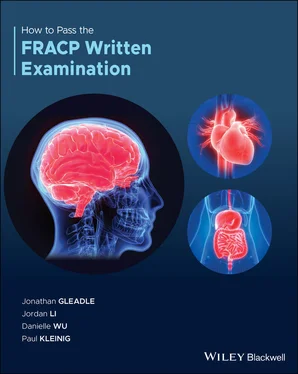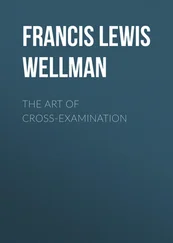24 24. A 27‐year‐old farmer suffers from brittle type 1 diabetes with impaired hypoglycaemic awareness. He is currently on a basal bolus regimen. His most recent HbA1c is 7.1%. You are considering real‐time continuous glucose monitoring (RTCGM). Which one of the clinical statements regarding the usage of RTCGM in this patient is correct?RTCGM provides continuous accurate measurement at 1–5 min increments of blood glucose concentrations.RTCGM provides no benefit in this patient because he is not using an insulin pump.RTCGM reduces time spent in the hyperglycaemic ranges but not hypoglycaemic range due to less accurate measurement at lower glucose.RTCGM will benefit this patient despite having achieved good blood glucose control.
25 25. Which of the following complications is most clearly and often associated with treatment with dapagliflozin in comparison to other diabetic treatments?Acute kidney injury.Amputation.Diabetic ketoacidosis.Urinary tract infection.
26 26. A 32‐year‐old woman presents with fatigue and self‐reported memory issues. She has no deficits on formal cognitive testing. She has no significant past medical or surgical history. Basic investigations reveal normal full blood examination, electrolytes, and liver function tests. Urine pregnancy test is negative. Thyroid function tests reveal FT4 of 12 pmol/L [10–20] and TSH of 6.7 mIU/L [0.5–4.5].Which of the following options represents the most appropriate next step?Initiate levothyroxine treatment.Measure thyroid stimulating antibodies.No further action required.Repeat TSH and T4 measurement in 1–3 months.
27 27. A 65‐year‐old woman has had a total thyroidectomy and radioactive iodine for treatment of papillary thyroid carcinoma. She had an excellent response to the initial treatment and is on an appropriate dose of thyroxine therapy. Six months later a neck ultrasound showed no residual thyroid disease.What other investigation should be performed at this time?Anti‐thyroperoxidase antibody.Anti‐thyroid stimulating hormone receptor antibody.Thyroglobulin.Whole body bone scan.
28 28. In which of the following pathways are driver mutations most frequently found in thyroid cancer?Mitogen‐activated protein kinase (MAPK).Myc.Phosphoinositide 3‐kinase/protein kinase B/mechanistic target of rapamycin (PI3k/AKT/mTOR).Tumour protein p53.
29 29. A 38‐year‐old man presents to his GP with a 3 cm mobile thyroid nodule. His thyroid function tests are normal. A fine‐needle aspirate is performed under ultrasound guidance. The cytologic findings are reported as non‐diagnostic.What is the next most appropriate investigation?Analyse fine‐needle aspirate for BRAF and RAS mutation.Measure serum calcitonin level.Repeat fine‐needle aspiration within 3 months.Repeat thyroid ultrasound within 6 months.
30 30. A 37‐year‐old transgender (TGD) person is seeking feminising hormone therapy. Which one of the following should be avoided in the gender‐affirming medical care?Anti‐androgens should be avoided.Cyproterone acetate should be avoided.Gonadotrophin‐releasing hormone analogues should be avoided.Progestins should be avoided.
QUESTIONS (31–34) REFER TO THE FOLLOWING INFORMATION
Match the clinical presentation, symptoms, and signs with metabolic and nutritional complications after bariatric surgery.
1 Calcium deficiency.
2 Copper deficiency.
3 Iron deficiency.
4 Vitamin A deficiency.
5 Vitamin B1 deficiency.
6 Vitamin B12 deficiency.
7 Vitamin D deficiency.
8 Zinc deficiency.
1 31. A 50‐year‐old man underwent a gastric banding because of OSA, type 2 diabetes. Post‐surgery, he developed chronic intermittent nausea and vomiting. He is now admitted with high output heart failure.
2 32. A 48‐year‐old man underwent a gastric sleeve operation for his morbid obesity 12 months ago. On his annual outpatient review, he complains of tingling in fingers and toes. He states that his memory is very poor. He has a tendency to stumble. He is diagnosed to have depression by his GP recently despite the significant weight loss. His blood test arranged by his GP shows macrocytic anaemia and mild abnormal LFTs.
3 33. A 49‐year‐old woman reported flashes in the eyes with poor night vision and reduced visual acuity for 8 weeks. She had a Roux‐en‐Y gastric bypass surgery 3 years ago. Ophthalmology evaluations revealed bilateral visual acuity of 6/36. Humphrey visual fields showed peripheral constriction in both eyes without a central scotoma. Slit‐lamp examination revealed conjunctival xerosis in both eyes. Bitot's spots and relative afferent papillary defects were absent. Fundoscopy examination revealed optic atrophy but normal appearing macula, vessels, and peripheral retina in both eyes.
4 34. A 48‐year‐old woman underwent a biliopancreatic diversion several years ago. She suffers skin or respiratory tract infections frequently. Her skin wound heals very slowly. She complains of blunting of taste sense, hair loss leading to alopecia. There is clinical evidence of glossitis.
QUESTIONS (35–5–36) REFER TO THE FOLLOWING INFORMATION
Match the clinical presentation with the appropriate endocrine investigations.
1 24‐hour urinary catecholamines and metanephrines.
2 24‐hour urinary cortisol.
3 Blood renin/aldosterone ratio.
4 Plasma vasopressin level.
5 Saline infusion test.
6 Thyroid function test.
7 Urinary sodium and osmolality.
8 Water deprivation test.
1 35. A 76‐year‐old woman presents with confusion. Her family reports her being constipated and gaining 5 kg weight in recent months. On examination, she is alert but disoriented in time and place. Her HR is 52 bpm and BP is 158/95 mmHg. There is non‐pitting oedema in the bilateral low limbs. The CXR reveals cardiomegaly and bilateral small pleural effusions. Apart from mild hyponatraemia (serum sodium level 133 mmol/L), other biochemistry results are unremarkable. What is the next most appropriate investigation?
2 36. A 68‐year‐old woman presents after a two‐day history of vomiting. She is found to have hypernatraemia but her elevated serum sodium concentration did not improve despite adequate fluid replacement. She has history of bipolar disorder and has been taking lithium for the past 8 years. What is the appropriate investigation after stabilizing this patient clinically?
1. Answer: D
This patient has typical clinical features of acromegaly. She has elevated insulin like growth factor 1 (IGF‐1) and growth hormone (GH) levels. The MRI demonstrates a large pituitary tumour. There is NO need for further investigation. She needs referral for neurosurgery.
Acromegaly is a severe disease resulting from GH hypersecretion, usually caused by a pituitary adenoma. It is associated with cardiovascular, cerebrovascular, and respiratory disorders, malignancies, and a high mortality. The onset of acromegaly in adults is usually insidious. Typical physical examination findings include hand and foot enlargement, facial bone enlargement and acral/soft tissue changes.
Investigation in a suspected patient involves measurement of IGF‐1 and GH. Elevated IGF‐I levels in a patient with clinical features of acromegaly almost always indicate GH excess. In subjects with elevated or equivocal serum IGF‐1 concentrations, guidelines recommended confirmation of the diagnosis with a lack of suppression of GH to less than 1 mcg/l following an oral glucose load. In a patient with signs and symptoms of acromegaly and a clearly elevated IGF‐1 value, an oral glucose suppression test is not needed for diagnosis.
GH, produced by the somatotroph cells of the pituitary gland in a pulsatile fashion, circulates and stimulates hepatic secretion of IGF‐1. A random GH measurement is not useful in diagnosis because of the lack of a well‐defined normal range, although a markedly elevated random GH level is consistent with the disease.
Читать дальше












